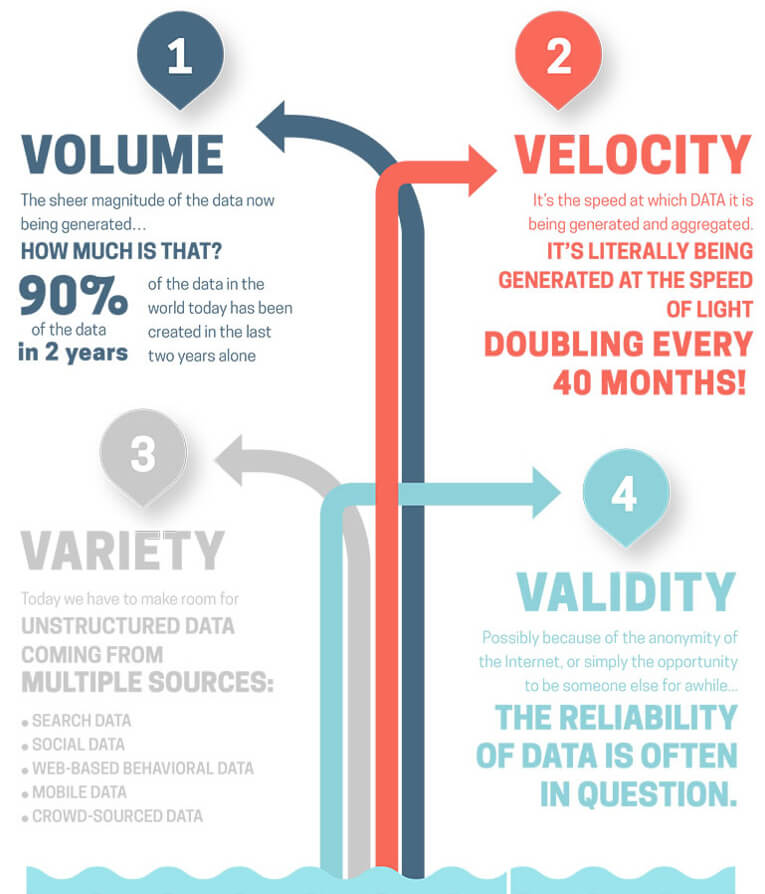Exponential growth in data creates new demands for which traditional data management techniques like relational databases are not satisfactory. The pervasive nature of the internet and the so-called IoT has ensured that the exponential growth of data remains unchecked.

visualcapitalist.com
The point of processing this type of data is to be able to react – make decisions, automate tasks, refine actions and content. This is very different than the traditional methods of store, warehouse, process transactions and then update the “system of record.” Bank accounts still work that way but real-time streams of location data from a fleet of million vehicles do not.
Companies like Google and Amazon have had to deal with this problem early and built their own data infrastructure to do so. Much of it incorporates and gives back to the community in the form of open source software. The first big building block put into open source was Hadoop which became the standard and is very widely used. A host of additional Hadoop-based open source projects have built on and extended the capabilities of Hadoop into a real data platform.
The problem is that building, maintaining and using this software is hard, very hard. Because it’s new there is also a shortage of skilled engineers and “data scientists” that can make it work and get real value out of the tools. The situation is similar to what we had with the Linux OS 20 years ago. Back then Red Hat (NYSE: RHT) seized the opportunity to take Linux and make it business friendly and enterprise ready. Today Red Hat generates $2.5B in revenues and has a respectable market cap of $16B.
Those of you who have followed the software IPO market closely might be saying “wait a minute wasn’t this the positioning of Hortonworks (NASDAQ: HDP)?” which came public in late 2014? With Goldman as the lead bank no less? You’d be right – this was precisely the positioning of HDP. From the HDP IPO Roadshow Slides – “Our mission is to establish Hadoop as the foundational technology of the modern enterprise.”
Hortonworks didn’t really succeed and their current share price is about 1/2 of what it was post-IPO. There are two main reasons – 1) they focused more on open source technology and architecture than enterprise needs and 2) Cloudera.
Cloudera was smart and lucky at the same time. We’ll get to the smart part next but the lucky part was a $740M investment from Intel in 2014 which gave Cloudera unmatchable resources to make the heavy investments required to satisfy large enterprise customers. Their level of financing allows
Much as been made of the huge ($4.1B) valuation of that Intel-led round but that’s all misguided noise. Intel didn’t make the investment for a financial return so the valuation isn’t relevant. The “real” private valuation of Cloudera pre-IPO should be considered to be $1.8B which was the valuation of the last financial round just before the Intel investment.












Leave A Comment